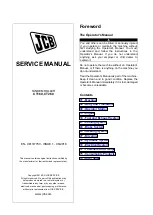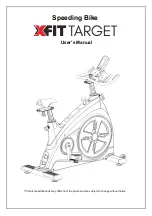
46
multi-way main speakers will require certain drivers to be polarity inverted when operating in bi-amped or tri-amped mode.
When selecting any bi-ampable or tri-ampable main speaker from the VENU360’s speaker tuning list in the Setup Wizard, such
polarity inversion will be performed for you automatically. If your multi-way main speaker model isn’t listed in the VENU360
and you can’t find tuning information for them, check the loudspeaker’s spec sheet or documentation, or contact the speaker
manufacturer as they will usually be able to provide this information.
If you’re unable to find polarity information for your speakers, or just want to verify your drivers are in phase, you can do some
investigative work using the VENU360’s built-in signal generator. To do so, take note of the crossover frequency setting used
between the drivers being tested then use the built-in signal generator (located in the RTA menu) to play a sine tone at this
frequency through the two drivers.
TIP:
Make sure any active AFS modules are turned off before engaging the signal tone generator. Failing to do so may
cause Live AFS filters to be set.
For example, if you’re testing the woofer and high frequency driver in a bi-amped main speaker cabinet and the active
crossover frequency between the two is set at 2.5 kHz, adjust the signal generator to play a 2.5 kHz sine tone through the two
drivers being tested. Stand in the “sweet spot” of the venue (the audience position equidistant from the speakers) and invert
the polarity in the VENU360’s crossover for the low output and find out which setting provides the loudest signal level (note
that results are most noticeable if sound pressure levels between the drivers have been matched). The setting which provides
the loudest signal level is the one which is more “in phase” and is the setting you should use. If applicable, perform this same
test, working your way down through the lower-frequency drivers.
Once polarity is matched for all drivers in the system, you’re ready to optimize the driver alignment delays. The “polarity” test
mentioned in the previous paragraph can also be used for determining if driver alignment delay is necessary. Play the selected
sine tone through the system (once again, the sine tone frequency should match the set crossover frequency of the drivers
being tested) and invert the polarity on the lower driver so that the two drivers are out of phase. If necessary, adjust the drivers’
levels until the most phase cancellation is achieved. Try adjusting the driver alignment delay for each driver to see if either
produces more phase cancellation – set the delay for the most phase cancellation on whichever driver requires it. For more
information on setting driver alignment delays, see
‘Delay (DLY) Modules’ on page 64
’. When done, set the polarity back
for proper phase alignment.
Variable phase adjustments can be made to each band using the PHASE parameters in the crossover. When using a
band-pass filter, the high-pass filter can interact with the low-pass filter when in close proximity. This can cause phase shifts
which can change the directionality (polar response) of the frequencies in the crossover overlap region. The PHASE parameter
utilizes a single-pole all-pass filter to correct for this.
In the below graph, three measurements of a crossover band are plotted to illustrate how an all-pass filter (the VENU360
PHASE parameter) can be used to correct for the phase shift caused by the addition of a high-pass filter. Butterworth 6 dB/
octave (BW 6) high-pass and low-pass filters were selected in order to illustrate the effects of the all-pass filter.
1�
Low-Pass:
A BW 6 low-pass filter causes a -45
degree phase shift at the low-pass filter frequency
(200Hz).
2�
Band-Pass:
(a)
Adding a BW 6 high-pass filter to
the existing low-pass filter causes a +45 degree phase
shift at the high-pass filter frequency (95Hz).
(b)
This causes the phase shift to increase at the
low-pass frequency by +25 degrees (the amount of shift
depends on the high-pass and low-pass filter types, as
well as the proximity of the high-pass frequency to the
low-pass frequency).
3�
Band-Pass With Phase Correction:
Setting the
phase parameter to -25 degrees realigns the phase of the signal at the low-pass crossover point.
1, 3
2(a)
2(b)
Band-Pass With Phase Correction
Band-Pass
Low-Pass
Band-Pass With Phase Correction
Band-Pass
Low-Pass
Содержание DriveRack VENU 360
Страница 1: ...Owner s Manual ...
















































